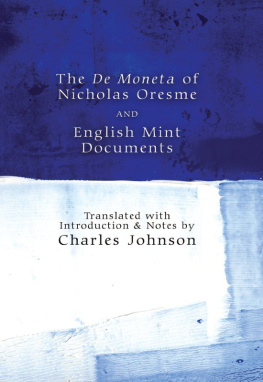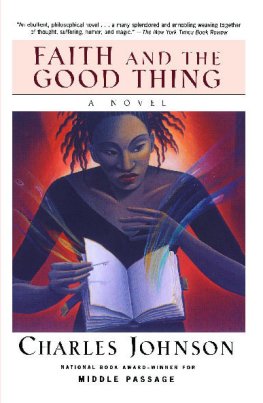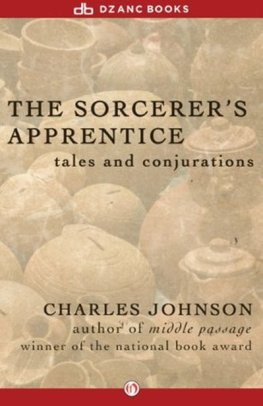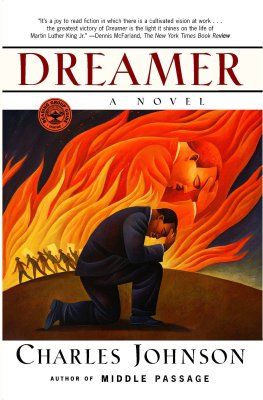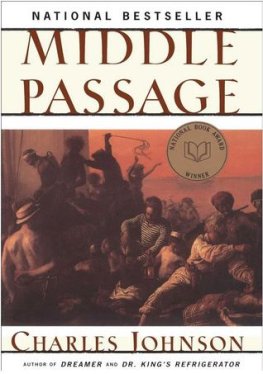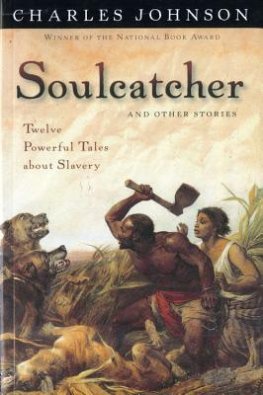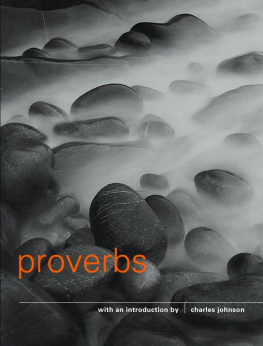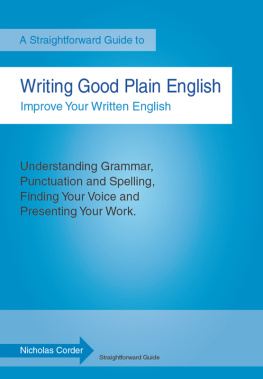Charles Johnson - The De Moneta of Nicholas Oresme and English Mint Documents
Here you can read online Charles Johnson - The De Moneta of Nicholas Oresme and English Mint Documents full text of the book (entire story) in english for free. Download pdf and epub, get meaning, cover and reviews about this ebook. year: 1956, publisher: Thomas Nelson and Sons Ltd, genre: Science. Description of the work, (preface) as well as reviews are available. Best literature library LitArk.com created for fans of good reading and offers a wide selection of genres:
Romance novel
Science fiction
Adventure
Detective
Science
History
Home and family
Prose
Art
Politics
Computer
Non-fiction
Religion
Business
Children
Humor
Choose a favorite category and find really read worthwhile books. Enjoy immersion in the world of imagination, feel the emotions of the characters or learn something new for yourself, make an fascinating discovery.
- Book:The De Moneta of Nicholas Oresme and English Mint Documents
- Author:
- Publisher:Thomas Nelson and Sons Ltd
- Genre:
- Year:1956
- Rating:5 / 5
- Favourites:Add to favourites
- Your mark:
- 100
- 1
- 2
- 3
- 4
- 5
The De Moneta of Nicholas Oresme and English Mint Documents: summary, description and annotation
We offer to read an annotation, description, summary or preface (depends on what the author of the book "The De Moneta of Nicholas Oresme and English Mint Documents" wrote himself). If you haven't found the necessary information about the book — write in the comments, we will try to find it.
Charles Johnson: author's other books
Who wrote The De Moneta of Nicholas Oresme and English Mint Documents? Find out the surname, the name of the author of the book and a list of all author's works by series.
The De Moneta of Nicholas Oresme and English Mint Documents — read online for free the complete book (whole text) full work
Below is the text of the book, divided by pages. System saving the place of the last page read, allows you to conveniently read the book "The De Moneta of Nicholas Oresme and English Mint Documents" online for free, without having to search again every time where you left off. Put a bookmark, and you can go to the page where you finished reading at any time.
Font size:
Interval:
Bookmark:

MEDIEVAL TEXTS
GENERAL EDITORS
V. H. Galbraith and R. A. B. Mynors
THE DE MONETA OF
NICHOLAS ORESME
and
ENGLISH MINT DOCUMENTS
The De Moneta of
Nicholas Oresme
and
English Mint Documents
Translated from the Latin with Introduction
and Notes by
Charles Johnson C.B.E. F.B.A.
sometime Scholar of Trinity College, Oxford
Thomas Nelson and Sons Ltd
London Edinburgh Paris Melbourne Toronto and New York

THOMAS NELSON AND SONS LTD
Parkside Works Edinburgh 9
36 Park Street London W1
312 Flinders Street Melbourne C1
302304 Barclays Bank Building
Commissioner and Kruis Streets
Johannesburg
THOMAS NELSON AND SONS (CANADA) LTD
9193 Wellington Street West Toronto 1
THOMAS NELSON AND SONS
19 East 47th Street New York 17
SOCIT FRANAISE DEDITIONS NELSON
25 rue Henri Barbusse Paris Ve
First published 1956
IT is a pleasure to acknowledge the substantial help which the translator has received in a task which, agreeable as it was, had difficulties for one who is neither an economist nor a numismatist. Professor R. A. B. Mynors has revised Wolowskis text of the De Moneta from a better selection of MSS, and has added a description of those which he has used. The two plates are due to the courtesy of Sir John Craig, to whom I am also indebted for leave to quote from his book on The Mint, and to the kindness of the Deputy-Master of the Royal Mint and of the Trustees of the British Museum. I must also thank those friends who have helped me by their knowledge of coins: Mr C. E. Blunt, Mr P. Grierson and Mr R. H. M. Dolley. I owe much to their aid, but they are not responsible for my blunders. The editors of the Medieval Series and the publishers have also done everything in their power to make my task easier.
CHARLES JOHNSON
THE aim of this volume is to give an account of the theory and practice of coinage in the thirteenth and fourteenth centuries. For the theory, Nicholas Oresmes De Moneta presents the scholastic doctrine derived from Aristotles Politics, For the practice, it seemed best to translate the treatise preserved in the Red Book of the Exchequer, and presumably written by William de Turnemire, Master of the Mint in 1279, with other documents from Hargrave MS 313 and from some of the registers of Bury St Edmunds Abbey, relating to the recoinages of 1247, 1279 and 1300, and to the gold coinage of Edward III.
Nicholas Oresme Oresme became bishop of Lisieux 16 November 1377 and was consecrated 28 January 1378. He died at Lisieux 11 July 1382.
Besides the works mentioned above, Oresme translated Aristotles De Caelo et Mundo, and wrote several books directed against the claim of astrologers to predict the future as well as sermons and theological tracts. The translations were not from the Greek, but from the Latin versions of Grosseteste and William of Moerbeke. The treatise on money, though based on the Politics, was an economic tract provoked by the successive debasements of the coinage by Philip VI and John II and the consequent derangement of trade and social relations. It has been suggested that it brought its author to the notice of Charles V, who was then acting as regent during his fathers captivity in England. But it is more likely that he was already employed in the kings service, as he is stated to have been engaged in raising a loan in Normandy in 1360, and there was a halt in the debasement of the coinage from 1360 to 1385.
In his treatise Oresme takes the Aristotelian view that a coin is a definite weight of precious metal, the quantity and fineness of which is guaranteed by the stamp of the authority issuing it. The currency does not belong to the issuing authority, but to the public which uses it for the purpose of exchange of goods. The prince has therefore no right to vary the standard or the weight or (if two metals are, as usually, employed) the bimetallic ratio; though the last may be done if the relative value of the metals is materially altered by a new source of supply. And any necessary alteration must be by agreement of the whole community. Debasement is condoned as a temporary political expedient, but the true values must be re-established as soon as possible. It is remarkable that Oresme takes no account of credit, nor of bills of exchange, which were already extensively used by Italian bankers at the beginning of the fourteenth century. Paper money (which Goethe credits Mephistopheles with inventing) had not yet appeared to complicate the question. In an age in which inconvertible paper is the rule, there is something particularly apposite in Oresmes arguments; and it is not surprising that a German translation by Dr Edgar Schorer (Jena 1937) lays some stress on this in an introduction.
It is curious that Oresme takes no account (pp. 1314, 1920) of what must have been a powerful motive for a gradual debasement of the coinage in the Middle Ages, the wear of the current coin. There was always a temptation to make the new coin approximate in value to the average worth of the coin in daily use. It was necessary either to call in all the old coin, and throw the loss upon the holders of it, or to see the new coin disappear into private hoards. And before the introduction of milled edges, the loss from wear was very heavy. The evidence of the mint officials estimated it at about 20 per cent in the early years of Richard II, when there had been no coinage of silver on a large scale for nearly thirty years, and there was a great lack of halfpence and farthings. Their estimate may have been too high, but the deterioration must have been considerable. To Oresme, to whom the maintenance of the standard was of supreme importance, there was little or no difference between such an adjustment of the new money and deliberate debasement; but he makes no provision for the gradual withdrawal of light money from circulation and its replacement by sound currency. A complete recoinage, the remedy which he proposes, throws the whole burden of the loss on the holders, at the moment, of the old money.
Oresme has been credited with the anticipation of Greshams Law on the strength of a passage in the French translation describing the effect of debasement on the coinage. But this passage comes from an addition to Oresmes own version, and is not contained in the two earliest MSS (Paris, Bibl. Nat. MSS fr. 5913 and 23,926), as M. Bridrey has pointed out. One MS at all events (MS fr. 5913) is written by a Flemish copyist, and reads (f. 3) et maintenant est au present en ce pays de Flandres et les voisins.
(Contributed by R. A. B. Mynors)
For the De Moneta we have no original manuscript; only a number of copies, whose making is spread out over the hundred years that followed the authors death. Taken together these agree so closely that we are rarely left in any doubt what the author wrote; and where their testimony differs, one or more of the earlier will always produce a reading by which the demands of sense and latinity are satisfied. As individuals they vary widely in external appearance and in quality, and give us some idea of the circulation of the work before it appeared in print.
Our three oldest are Parisian, two from the Abbey of St Victor and one from St Germain des Prs, and take us back to the theology schools of the University of Paris at the end of the fourteenth century:
Font size:
Interval:
Bookmark:
Similar books «The De Moneta of Nicholas Oresme and English Mint Documents»
Look at similar books to The De Moneta of Nicholas Oresme and English Mint Documents. We have selected literature similar in name and meaning in the hope of providing readers with more options to find new, interesting, not yet read works.
Discussion, reviews of the book The De Moneta of Nicholas Oresme and English Mint Documents and just readers' own opinions. Leave your comments, write what you think about the work, its meaning or the main characters. Specify what exactly you liked and what you didn't like, and why you think so.

